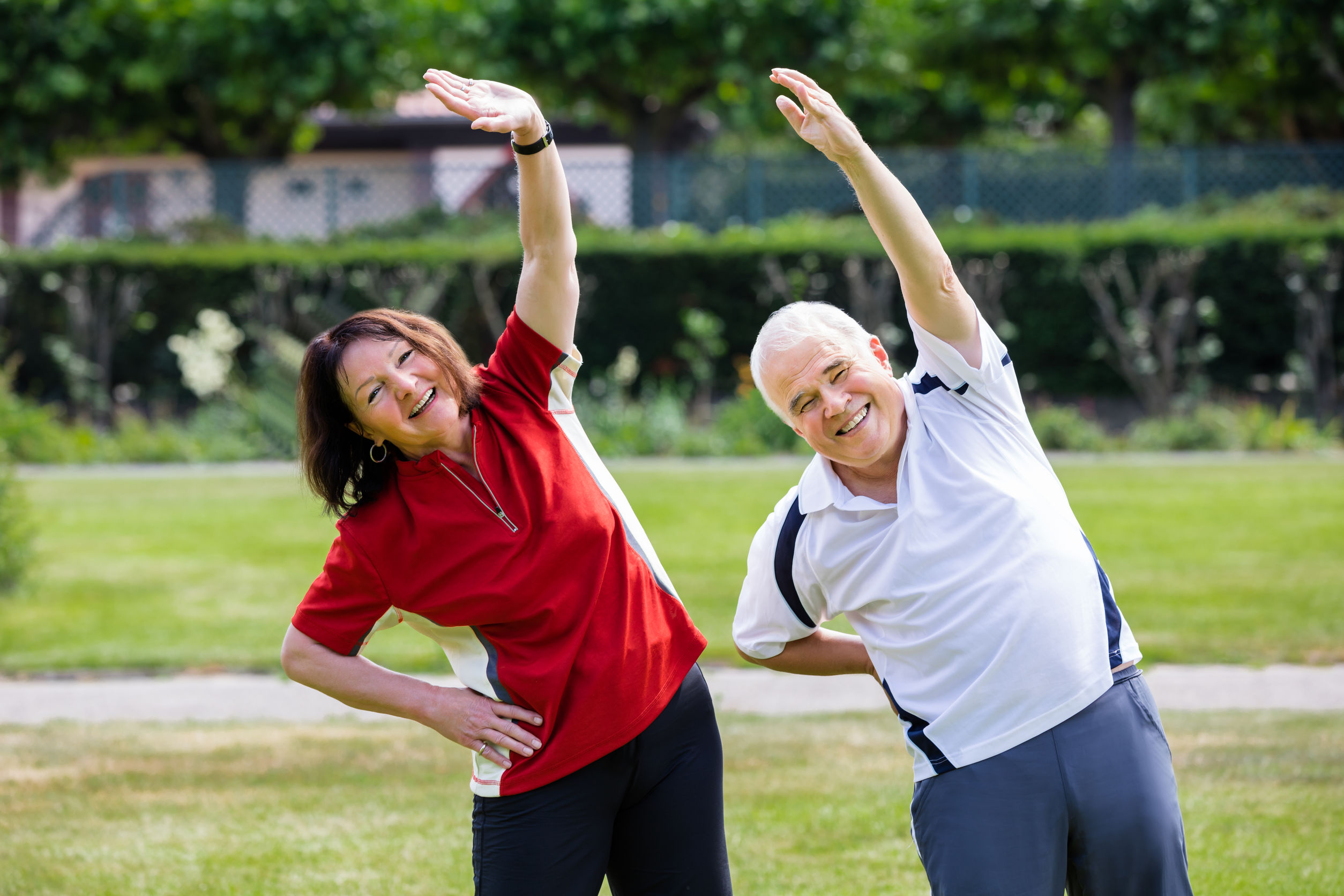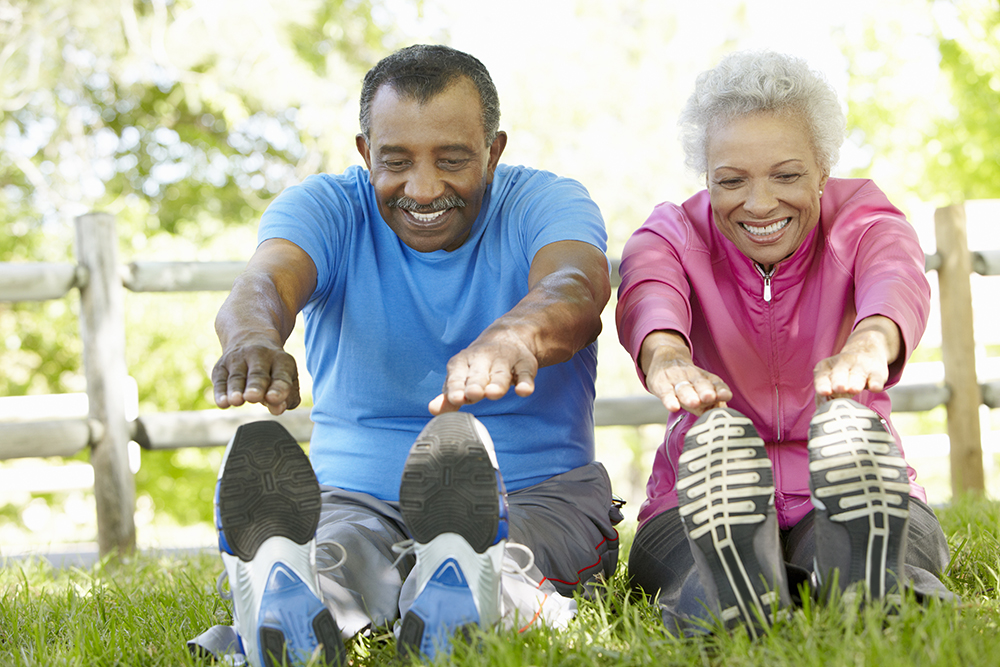It can be tough to stay mobile when you get older. It’s hard enough maintaining a proper work-life balance, but it becomes even more challenging as your body ages. Some people can find it extremely difficult to simply get out of bed in the morning, or perform relatively simple tasks throughout the day. Stretching may help, by improving your range of motion.
Stretching your muscles properly is important at any stage in life, but it’s even more critical that you do it as you age.
Here are just a few of the reasons why you need to take whatever steps you can to maintain your flexibility as you age.
Expanding Your Range of Motion
The more flexible your muscles are, the better the chances that you’ll have a full range of motion throughout your life. Not only will this improve your performance when playing sports, such as tennis or golf, it could also help protect you from suffering back pain.1
 Warming up before physical activity is a great way to help your muscles get the oxygen and blood they need to perform their best. It could be something as simple as taking a short walk or taking a few practice swings with a golf club or tennis racquet. Once you’ve done your warm-up for about 10 minutes or so, then perform your stretching exercises to get your muscles loose.2
Warming up before physical activity is a great way to help your muscles get the oxygen and blood they need to perform their best. It could be something as simple as taking a short walk or taking a few practice swings with a golf club or tennis racquet. Once you’ve done your warm-up for about 10 minutes or so, then perform your stretching exercises to get your muscles loose.2
Reducing Your Chances of Developing Arthritis
Stretching your muscles not only helps expand your range of motion, it might also help protect you against the pain caused by arthritis. Far too many older people develop osteoarthritis, a condition that results from the breakdown of cartilage between your joints. It is estimated that more than 12 million people age 65 and older have this condition.3
While osteoarthritis can’t be prevented entirely, stretching your muscles can help you manage discomfort. Increasing flexibility as you age may help relieve stiffness and soreness. But before you start your stretching routine, use a heat pack to warm up your muscles. Then, once you’re finished exercising, use an ice pack to reduce swelling.
Improving Your Posture
 If you are slowly starting to show signs of stooped shoulders or other posture problems, stretching your muscles on a regular basis could help. Our shoulder and chest tendons and ligaments tend to tighten with age. Stretching your muscles can help loosen them. This increased flexibility will go a long way toward correcting posture problems.4
If you are slowly starting to show signs of stooped shoulders or other posture problems, stretching your muscles on a regular basis could help. Our shoulder and chest tendons and ligaments tend to tighten with age. Stretching your muscles can help loosen them. This increased flexibility will go a long way toward correcting posture problems.4
Lowering the Risk of Falling
As we age, our risk of falls increases. Falls can be devastating, particularly in the elderly, who are at the highest risk. This is where stretching may prove beneficial. If you are more flexible, you can greatly lower the chances that falls will happen. Regular stretching of the quadriceps, hamstrings, and the lower back can help improve your stability and balance.5
Giving You More Energy
Who doesn’t want a little more energy every day? The need for more energy increases with age, as it’s a key component of maintaining independence and good health. Stretching your muscles helps to increase blood circulation. This, in turn, helps to increase the flow of nutrients throughout your body. As a result, you have more energy to get out and enjoy life.
But it’s important that you do the right kinds of stretches if you’re looking for more energy. “Dynamic” stretches are best, such as leg swings, shoulder circles, lunges, and squats. These are different from “static” stretches, which you perform while your body isn’t moving. Talk to a trainer at your local gymnasium to find out the best stretches to help boost your energy levels.
How to Find the Right Stretching Regimen for You
 Whether you’re retired or you’re still in the workforce, you need to make time for physical activity. Finding a proper work-life balance is always important – even more so as you get toward retirement age. By working with a professional trainer, you can find the stretching routine that works best for whatever shape you may be in.
Whether you’re retired or you’re still in the workforce, you need to make time for physical activity. Finding a proper work-life balance is always important – even more so as you get toward retirement age. By working with a professional trainer, you can find the stretching routine that works best for whatever shape you may be in.
In general, experts recommend that older adults stretch at least two times a week, and stretch their muscles to the point to where they feel either a small amount of discomfort or notice a sensation of tightness.
During your routine, you should try to hold each stretch anywhere from 20-30 seconds.6
The Takeaway
Don’t assume that just because you’re getting older you have to be resigned to a life of fatigue and pain. When you increase your flexibility as you age, by stretching your muscles on a regular basis, you’ll experience benefits you might not have previously thought were possible.
Learn More:
Massage: Luxury or Therapy?
5 Brain Exercises that are Fun (and Challenging)
Go Pitch A Tent: The Incredible Health Benefits Of Camping
Sources
1.https://www.ncbi.nlm.nih.gov/pmc/articles/PMC4934575/
2.https://www.health.harvard.edu/staying-healthy/benefits-of-flexibility-exercises
3.https://www.lifespanfitness.com/fitness/resources/articles/health-benefits-of-stretching-exercises-in-older-adults
4.https://www.researchgate.net/publication/273412829_Effects_of_stretching_exercises_for_posture_correction_systematic_review
5.https://www.ncbi.nlm.nih.gov/pmc/articles/PMC5003582/
6.https://www.cdc.gov/physicalactivity/downloads/growing_stronger.pdf
